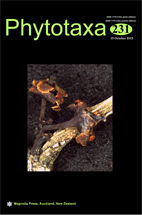Abstract
Knowledge of the monocot flora of the Seychelles remains relatively weak and new taxonomic studies, including both herbarium specimens and field observations, are needed. Extensive new explorations in the key biodiversity areas of the Seychelles granitic islands resulted in the discovery of an unknown species of Costularia. After careful examination of existing specimens and literature within that genus, we concluded that the unknown plant corresponds to the type of Cladium xipholepis, a species endemic to the Seychelles which had previously been confused and put into synonymy with two unrelated taxa, i.e. the other Seychelles endemic Costularia hornei and the Mascarene species C. melicoides. These confusions were due to the immature state of the type of Cladium xipholepis, which was the only known specimen of the species. The name Cladium xipholepis is here resurrected and combined in the genus Costularia, adding one endemic species to the flora of the Seychelles. In addition, a detailed description is provided, correcting important errors regarding diagnostic characters made in the original description. Costularia xipholepis is a rare species, occurring on lower montane inselbergs of Mahé Island, and is here proposed as endangered (EN) according to IUCN Red List categories and criteria. It is morphologically closely related to C. pantopoda var. baronii from Madagascar. The other Seychelles endemic Costularia, C. hornei (lectotype designated here), has no close relative and belongs to a group distributed in South-East Asia. We discuss these results in relation to the origins of the flora of the Seychelles. Finally, the previously thought endemic variety Costularia hornei var. rectirhachilloidea was also reviewed and we consider it to be identical to the type variety, but based on specimens at an earlier stage of spikelet development. These discoveries, along with other preliminary studies, indicate that more studies are needed to review the monocots of the Seychelles, particularly Cyperaceae, Orchidaceae and Poaceae.

